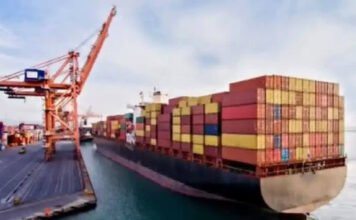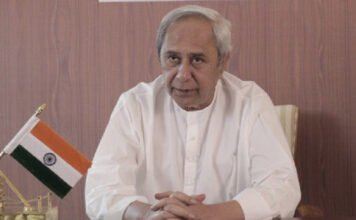New Delhi, Nov 4: Minister of Railways Shri Suresh Prabhakar Prabhu has inaugurated the International Conference on Decarbonisation of Indian Railways – Mission Electrification organised by Institution of Railways Electrical Engineer (IREE) in partnership with ASSOCHAM India. Chairman, Railway Board, Shri A. K. Mital, Member Traction, Railway Board Shri Ashwani Kumar Kapoor, other Railway Board Members and senior officials were also be present on the occasion.
On the occasion a mobile app ‘RAIL SAVER’ was launched by the Minister of Railways Shri Suresh Prabhakar Prabhu. This app is expected to reduce energy consumption by 15 – 20%.
Speaking on the occasion Shri Suresh Prabhakar Prabhu said that Indian Railways is looking forward to make Railways greener by electrifying another 24000 km of Rail Tracks to the existing 28000 km in the next few years. He also said that being the biggest user of energy Indian Railways consumes about 18 billion units of electricity and about 2.4 billion liters of fuel oil which is more than 2% of country’s energy consumption. Energy demand of Indian Railways is expected to triple by 2030 from current levels to 49 billion units of electricity. Decarbonising the Railways will help achieve the commitment made by India under Paris agreement to reduce its Green House Gas emissions by 33-35% by 2030 from the 2005 levels. He further said that Railways will change significantly with the initiatives to produce greener energy & by electrifying the railways substantially. Consumption of imported oil will come down with electrification, thereby reducing burden on the exchequer. He also said that Increase in the pace of electrification will reduce its fuel bill by Rs. 10000 Crore annually as against the business as usual approach.
Addressing the conference Shri AK Mital, Chairman Railway Board said that by adding 24000 km under Mission Electrification about 90% of the tracks under Indian Railways will become electrified. Electricity consumption will be reduced under Mission Electrification through the adoption of energy efficient appliances/equipment. He also said that Indian Railways has set a target of 40% of cumulative electricity generation capacity through renewable energy by 2030.
Shri Ashwani Kumar Kapoor, Member Traction, Railway Board said that Indian Railways has embarked upon Mission Decarbonisation and Mission Electrification with an aim to reduce dependence on imported fuel and rationalize the cost of energy for Railways.
Backgrounder about international conference on decarbonization of Indian railways – mission electrification:
- The Conference aims at bringing various stakeholders on a common platform for exchange of ideas and to deliberate on implementable technological solutions and financing options to significantly increase pace of electrification and achieve the target for setting up of renewable energy installations with total capacity of 1000 MW by 2020.
- The Conference also projected Indian Railways as an attractive investment destination considering its plans for huge investment in next 5 years towards modernization of its electrified network and use of renewable energy.
- The Conference shall cover aspects relating to policy, technological modernization, mechanization, innovations and financing models for railway electrification and de-carbonization.
- National Transport Development Policy Committee (NTDPC), in its report, has identified electrification of railway tracks as a means to reduce fuel consumption. The report has recommended for taking up electrification on priority through systematically tackling the bottlenecks in progress of electrification projects. It has also suggested that electrification should be viewed as a means of making rail transport independent of imported fossil energy, while also provide a choice in sourcing energy. Moreover, electric traction allows regeneration of power while braking/coasting and feeding the network, thereby reducing overall consumption of energy and carbon emissions.
- In this regard, following action has been planned for improving efficiency and bringing in cost economies in freight and passenger operations. Reducing the Carbon Foot prints through use of sustainable and green sources of energy is also a key focus area.
In line with this vision, following action plan has been planned:
- Electrification of Railway Tracks
Currently 28,000 Rkm of tracks are electrified (42% of the total network) carrying around two-thirds of total freight traffic and 50% of total passenger traffic. As against 800 km of average electrification in the earlier years, 1600 Rkm of railway tracks were electrified in 2015-’16.
Further, in order to enhance the pace of electrification, following plan has been prepared:
| Year | 2016-’17 | 2017-’18 | 2018-’19 | 2019-’20 | 2020-’21 |
| Target for electrification (Rkm) | 2,000 | 4,000 | 6,000 | 6,200 | 6,200 |
To fast track the pace of electrification, Ministry of Railway would be involving PSUs like IRCON, RITES and PGCIL. Increase in the pace of electrification will reduce its fuel bill by Rs. 10,000 cr. annually as against the business as usual approach.
- Harnessing Renewable Energy on IR to reduce energy cost and carbon footprints
– Indian Railways targets to harness 1 GW solar and 500 MW wind power as announced in Rail Budget 2015-’16,
– 500 MW of solar units on roof tops through Central Finance Assistance (CFA) from MNRE and balance 500 MW on land.
- Introduction of Energy Efficient Rolling Stock
Acquisition/ Introduction of new energy efficient Rolling Stock has been initiated through the following projects
- Electric Loco Manufacturing Factory at Madhepura in Bihar
Project awarded to Madhepura Electric Locomotive Private Limited (MELPL), a JV company of Ministry of Railways and Alstom Manufacturing India Limited, to manufacture, supply and maintain the state of art 12,000 HP energy efficient locomotives.
- Production of Energy Efficient High Horsepower Locomotives
– Last year, CLW achieved highest ever out turn of 280 locomotives, out of which 215 were energy efficient three-phase electric locomotives.
– CLW has completely switched over to production of only energy efficient IGBT based High Horse Power three-phase locomotives from current year and has turned out 122 such locos till Sept.’16.
- Head On Generation (HOG)
Indian Railways have introduced HOG system wherein the lighting, air-conditioning and other electrical loads of passenger coaches would be fed directly from electric power drawn by locomotive from grid. This system will do away with the requirement of diesel power car for feeding electric supply to coaches and also enable in carrying additional passengers. This system has already been introduced in NDLS-Mumbai Rajdhani Express saving around 3,000 liters of diesel in one round trip.
- Electrical Multiple Units (EMUs)
All new EMUs produced will be energy efficient with three phase technology having regeneration capability. Around 200 energy efficient rakes have been introduced in Mumbai Suburban area having regenerative braking feature since 2007.
- Manufacturing of energy efficient electric locos from DLW, Varanasi
In order to meet the increased requirement of electric locomotives resulting from accelerated electrification, it has been decided to manufacture electric locos from DLW, Varanasi also. It is planned to manufacture two locos in the current financial year followed by ten locos next year and there on.
Source-PIB



























